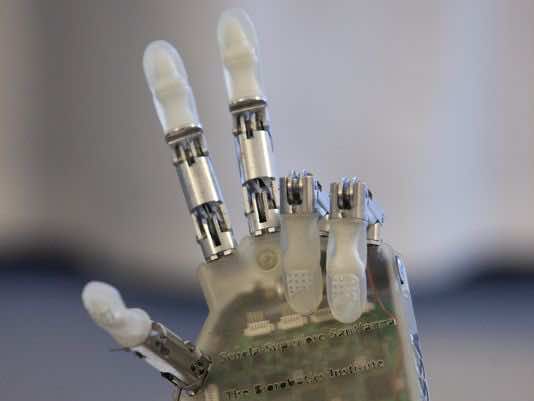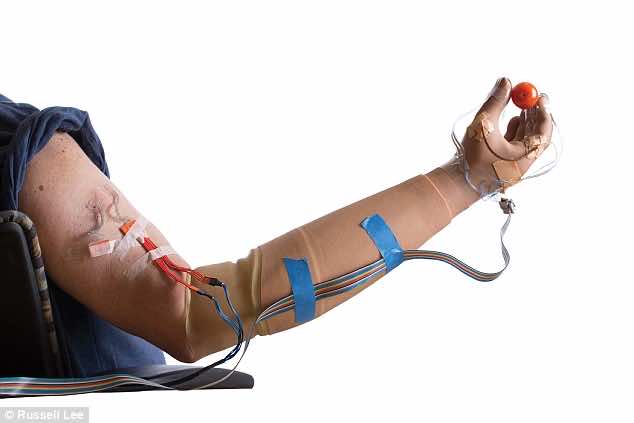What is the one thing that prosthetic limbs have been unable to restore? The sense of touch, of course, and that is what our today’s post is about. Researchers have recently unveiled that there are two patients who have been given these amazing new prosthetics that are connected to the skeleton and nervous system thus enabling the user to ‘feel’ what the prosthetic limb comes in contact with.
One of two patients is Igor Spetic, who is 48 years old and has been fitted with a bionic hand just like the other patient. He was made to wear a blindfold and was aware of the arm hair rising when the researcher made contact of cotton ball with the artificial device. In the words of Igor, “I knew immediately it was cotton.” How was this achieved? The nerves that are employed to relay the touch sense to brain are stimulated by contact points. These contact points are located on the 7mm ‘electrode cuffs’ that are basically located around the major nerve bundles in the arm.
Upon these cuffs making contact with the intended nerves, Spetic is capable of feeling the back of his hand and everything that his fingers come in contact with. Of course, by his fingers we mean the corresponding component of the prosthesis and he is able to feel a plethora of materials that vary from metal to sandpaper. The system is currently only being tested within the lab where it has been in use by Spetic for 2.5 years and 1.5 years by the second patient known as Keith Vonderhueval. Both of the patients are test subjects.
Based upon the progress being made in these patients’ case, the researchers are really hopeful that this particular approach can enable them to achieve a usage that will last for a lifetime and speculate that a system for home users shall be ready in about 5 years. Spetic works as a truck driver in northern Sweden and says that ever since he was recruited in the program, he is capable of tackling the hurdles his that job and life throw at him. Both the patients have also reported that the phantom pain has almost subsided for both of them.
Professor Dustin Tyler, from Case Western Reserve University in Ohio, said, “The sense of touch is one of the ways we interact with objects around us. Our goal is not just to restore function but to build a reconnection to the world. This is long-lasting, chronic restoration of sensation over multiple points across the hand. The work reactivates areas of the brain that produce the sense of touch. When the hand is lost the inputs that switched on these areas were lost.”
Vonderhueval said, “The sense of touch actually gets better. They change things on the computer to change the sensation. One time it felt like water running across the back of my hand.” Vonderhuevel, blindfolded, used the prosthetic to hold cherries/grapes where the signals told him to be able to if he was squeezing too tightly and was even able to pull out the stems. He says, “When the sensation’s on it’s not too hard. When it’s off you make a lot of grape juice.”
Prof. Tyler says, “I don’t presume the stimuli we’re giving is hitting the spots on the map exactly but they’re familiar enough the brain identifies what it is.” This new research has opened new avenues in the field of haptic feedback and we look forward to seeing this technology in the mainstream soon.

